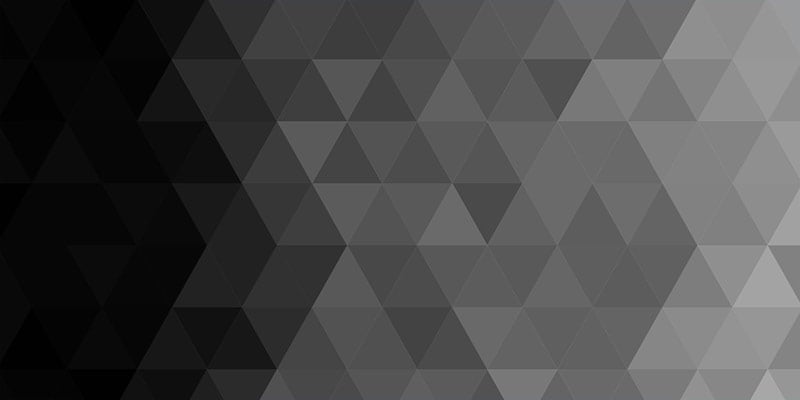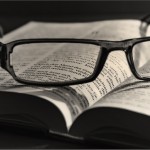I deeply respect the Jewish approach to the study of the scriptures. It is said that simply stating an opinion about Torah without any background or training in how to critically think about the text is Torah discussion but is not necessarily Torah study. To encourage critical thinking, rabbis from at least the third century C.E. established a simple four-level system known as PaRDeS. Each consonant in this acronym stands for a Hebrew word, and put together they mystically form the word “orchard” (פָּרְדֵּס), or paradise.
- p’shat — “plain”
- remez — “hints”
- d’rash/midrash — “inquire”
- sod — “secret”
The p’shat level of exegesis seeks to explain the “plain,” simple, or obvious meaning of the text. This is the type of scripture study that we see so often in our Sunday School classes. Even LDS Seminary and Institute manuals are filled with this level of study. Of course, the p’shat meaning of a text is quite important. It is the keystone of scriptural understanding, and takes into account the customary meanings of the words, literary style, historical and cultural setting, and context. In Lesson 20 of our current Sunday School manual, the teacher is advised:
Discuss Mosiah 25. Explain that Limhi’s people and Alma’s people joined the people of King Mosiah in Zarahemla. Help class members understand that there were now four groups united in Zarahemla under King Mosiah . . . Explain that all these people now called themselves Nephites.
This is a p’shat reading of the scripture passage. The manual continues in this vein, and instructs the teacher to point out that “many Church members are led into sin by unbelievers”, “Alma the Younger and the sons of Mosiah are visited by an angel”, and “Alma and the sons of Mosiah dedicate themselves to preaching the gospel”. Questions are asked of the class relating to the simple meanings in the text: a worldwide church, persecution, sin, forgiveness, conversion, and missionary efforts.
I think it would be interesting to see what an LDS Sunday School lesson would look like if it went beyond this first level of exegesis and engaged some of the other levels of understanding scripture. Of course, this might be a bit more uncomfortable for the average Latter-day Saint. In Jewish thought, it is more important to teach the student how to think in different ways than to teach them Torah from the point of view of the teacher. Rabbi Stephen Robbins explains:
“As we know from our own tradition there are a myriad of different points of analysis about any Torah text—many of these seem to contradict each other yet all are quoted as being valid in some way or another. Consider the statement patish y’fotzaytz selah shivim panim l’torah – “As a hammer shatters a rock into many sparks so there are 70 faces to the Torah.” In this case, the hammer is the system of PaRDeS, which is the system of interpreting Torah developed by the rabbis, the sparks are the myriad of insights that explode in the mind and the 70 faces indicate the infinite number of ways in which Torah can be understood and communicated.”
The second level in this model, remez, is so-called because there is a “hint” in the text that something deeper is happening. Perhaps there is a grammatical anomaly, or something seems out of place. These need to be identified and explained. One of the paths of remez is that of Gematria, the search for meaning by evaluating the numerical equivalents of Hebrew words and verses.
In Mosiah 25, the text which is being considered in Lesson 20, there are a number of verses which lend themselves to remez interpretation. Mosiah 25:23 speaks of 7 churches which are located in the land of Zarahemla. The hint is found in the number 7, which points to an important idea. It calls to mind the seventh day, the Sabbath, and entering into the “rest” (or presence) of the Lord. In Hebrew, the number 7 means completeness. These 7 centers have a correspondence to the 7 “spirits,” the 7 churches found in Revelation 1:11, the seven branched candlestick (each one a light) and also the 7 seals on the book that only the Lamb of God can read. The number seven alludes to the idea that we are in the presence of God.
Similarly, the 4 groups of people are significant. They all become united under one king. We will see how important this is as we continue the reading.
The d’rash reading of a scriptural passage involves deeper explanations of a passage in the midrashic style. It is a way of expanding upon Biblical passages using the text as a springboard. The teaching may be applied to events that go beyond what was originally intended by the author. A d’rash exegesis could also involve a sermon or homily on the moralistic meaning of the passage. This technique is actually used to some extent in LDS correlated lessons when a text is “likened” to modern situations. An example of this in Lesson 20 occurs when the following question is posed:
How were the people able to remain “one church” after being assembled into different congregations? (See Mosiah 25:21–24.) How can their example help us today as we face the challenges of remaining “one” in a worldwide Church?
This kind of reading, however, can be exceedingly rich and nuanced. It challenges one to enter the “orchard” and feast upon the word. One of the big ideas behind this chapter is unity in multiplicity. We start with several groups of people. One group, the Amulonites, reject the wicked teachings of their fathers, and “would no longer be called by the names of their fathers, therefore they took upon themselves the name of Nephi, that they might be called the children of Nephi and be numbered among those who were called Nephites.” This idea is carried forth later in the chapter as all the people of Zarahemla are encouraged to be baptized, and come into the Church, and be numbered with the people of God. They assemble themselves together in different bodies, but they “were all one Church.” There is one “mouth,” or one appointed channel; and their unity depends on receiving the word from that one authorized oracle. Multiplicity is in perfect unity, indicated by the number 7: “and they were all called the people of God.” From here the reader can go in many directions– one that comes to mind is the scripture which warns “if you are not one you are not mine,” or “for the Lord called his people Zion, because.. well, you know.
The final level of rabbinic exegesis is known as sod. This level of interpretation engages the mystical dimensions of Jewish thought and reveals the deeper spiritual truths that are hidden in the Torah text. Unlike the other levels of PaRDeS, which generally adhere to the narrative or to the issue that is being raised in Torah, the sod material may range far afield and enter into topics, content, issues, or ideas that at first glance seem to be loosely applied to the portion itself.
In Mosiah 25:21, there is a word replacement where the text itself indicates what the word replacement should be: “Therefore they did assemble themselves together in different bodies, being called churches.” One might profitably go through the next several verses and replace the word “church” with the word “body” and see if a mystical meaning becomes apparent. For instance: “And thus, notwithstanding there being many churches (bodies) they were all one church (body) yea, even the church (body) of God.” Later we see that this is a seven-fold body, seven being the number of perfection, and the number of spirits before the Divine Presence. The word spirit occurs in the very next verse, reinforcing the idea.
In Mosiah 25:23, there is another word replacement: “the name of Christ, or of God.” In Christian mysticism, the name of God, the Tetragrammaton, (yod heh vav heh) is related to the mystical name of Christ, (yod heh shin vav heh). The shin is inserted in the middle, being the letter of the spirit. This is pronounced “yehoshuah,” or the anglicized “Jesus.” The name of the Father is a tetragrammaton, and the name of the Son is a pentagrammaton, represented by a five-pointed star, emblematic of the five wounds of Christ. Now, if you will, look at the connection to the previous substitution, church and body. If you can say “church of God, you can also say, “body of Christ.” There is thus a subtle, dancing wordplay in the text of the Book of Mormon which can be grasped from the text as a revelation to the diligent reader.
The further levels of understanding do not take away from the plain meaning of the text; instead they enrich it. In this case, the scriptural passage at the pshat level is simply history. But it can be mined for further understanding and open for us in a beautiful way. In all of one’s explorations, one can never lose sight of the plain meaning. But unless one has engaged all four levels of PaRDeS, he/she cannot enter the Garden to taste and partake of the fruit.
I’ve just touched on some of the directions the student of the scriptures can go with this, randomly using this Sunday’s lesson material. Now, would you like to try it? Pick one of the methods above: remez, d’rash, or sod and use it to expound on a scriptural passage. Show us in the comments what you come up with!











